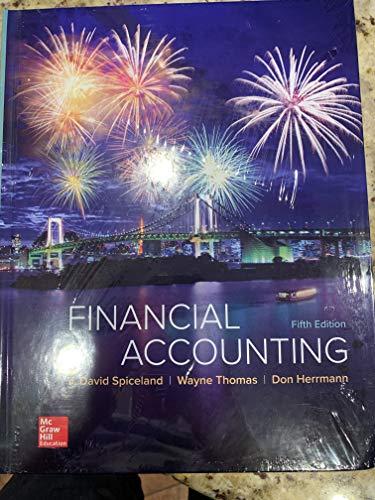
Concept explainers
a)
Calculate the cost of ending inventory and cost of goods sold using FIFO method.
a)
Explanation of Solution
Perpetual Inventory System:
Perpetual Inventory System refers to the inventory system that maintains the detailed records of every inventory transactions related to purchases, and sales on a continuous basis. It shows the exact on-hand-inventory at any point of time.
First-in-First-Out:
In First-in-First-Out method, the costs of the initially purchased items are considered as cost of goods sold, for the items which are sold first. The value of the ending inventory consists of the recent purchased items.
Ending Inventory:
It represents the quantity and price of the goods unsold and laying at the store at the end of a particular period.
Calculate the cost of ending inventory:

Table 1
Note:
- The ending inventory is 1,500 units.
- In FIFO method the ending inventory comprises of the inventory purchased last, because the inventory purchased first were sold first.
- Therefore, the ending inventory of 1,500 units from October 22nd purchases.
Cost of goods sold:
Cost of goods sold is the accumulate total of all direct cost incurred in manufacturing the goods or the products which has been sold during a period. Cost of goods sold involves direct material, direct labor, and manufacturing
Determine the cost of goods sold:
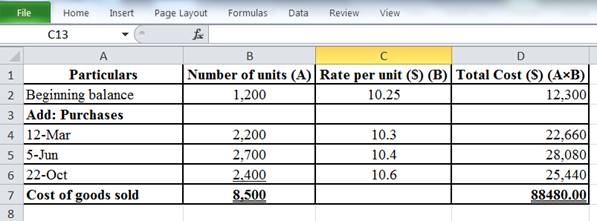
Table 2
Note:
- 8,500 units are sold.
- As it is FIFO method, the earlier purchased items will be sold first.
- Hence, the cost of goods sold will be the earlier purchased items.
Therefore, the cost of Ending Inventory, and cost of goods sold in the FIFO is $15,900 and $88,480, respectively.
b)
Calculate the cost of ending inventory and cost of goods sold using LIFO method.
b)
Explanation of Solution
Last-in-Last-Out:
In Last-in-First-Out method, the costs of last purchased items are considered as the cost of goods sold, for the items which are sold first. The value of the closing stock consists of the initial purchased items.
Calculate the cost of ending inventory:
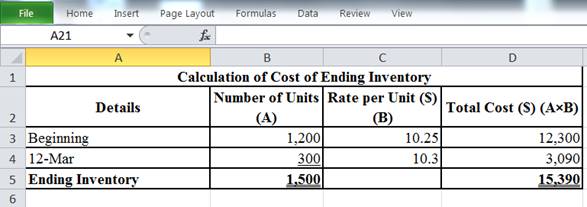
Table 3
Note:
- The ending inventory is 1,500 units.
- In LIFO method, the ending inventory comprises of the inventory purchased first, because the inventory purchased last were sold first.
- Therefore, the ending inventory of 1,500 units is from the beginning inventory and from March 12 purchases.
Cost of goods sold:
Cost of goods sold is the accumulate total of all direct cost incurred in manufacturing the goods or the products which has been sold during a period. Cost of goods sold involves direct material, direct labor, and manufacturing overheads.
Determine the cost of goods sold:
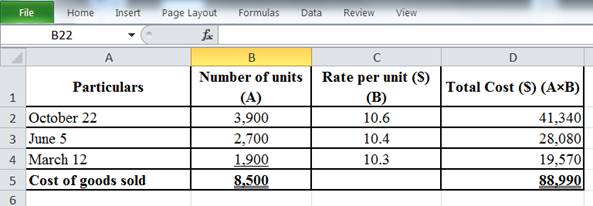
Table 4
Note:
- 8,500 units are sold.
- As it is LIFO method, the recent purchased items will be sold first.
- Hence, the cost of goods sold will be the recent purchased items.
Therefore, the cost of Ending Inventory, and cost of goods sold in the LIFO is $15,390 and $88,990, respectively.
c)
Calculate the cost of ending inventory and cost of goods sold using weighted-average method.
c)
Explanation of Solution
Weighted-average cost method:
Under Weighted average cost method, the company calculates a new average cost after every purchase is made. It is determined by dividing the cost of goods available for sale by the units on hand.
Calculate the cost of ending inventory:
Working note:
Calculate the Weighted-average cost:
Calculate the Cost of Goods Sold.
Therefore, the cost of Ending Inventory, and cost of goods sold in the weighted-average method is $15,657 and $88,723, respectively.
d)
Calculate gross profit for each method and calculate gross profit if the unit costs were different.
d)
Explanation of Solution
Gross profit is the difference between the sales and the cost of goods sold.
Calculate the gross profit:
Determine the amount of sales revenue:
Calculate gross profit under FIFO method:
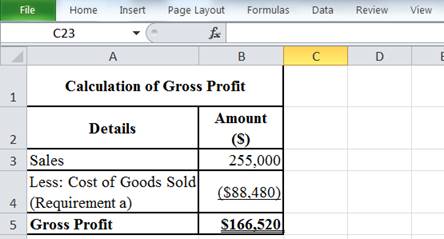
Table 5
Calculate gross profit under LIFO method:
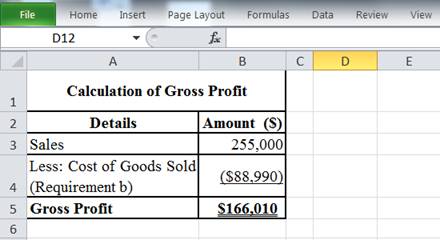
Table 6
Calculate gross profit under weighted-average method:
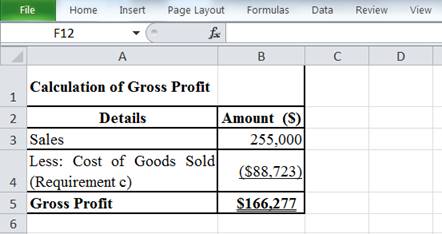
Table 7
Calculate cost of goods sold under each method if the unit costs were different as follows:
Cost of goods sold under FIFO method:
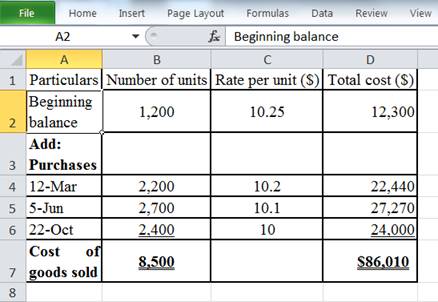
Table 8
Cost of goods sold under LIFO method:
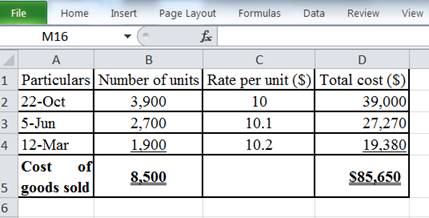
Table 9
Cost of goods sold under Weighted-average method:
Calculate the Weighted-average cost:
Calculate the Cost of Goods Sold.
Calculate the total Cost and units of Goods Available for Sales:
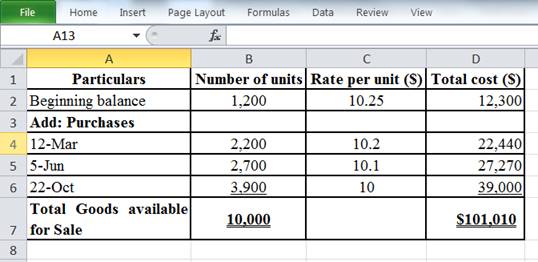
Table 10
Calculate gross profit under each method if the unit costs were different as follows:
Calculate gross profit under FIFO method:
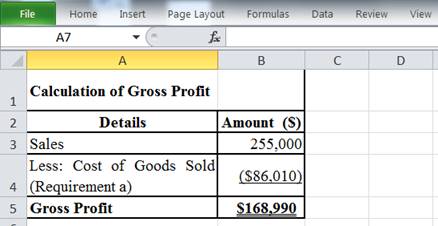
Table 11
Calculate gross profit under LIFO method:
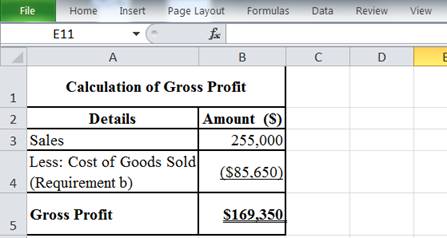
Table 12
Calculate gross profit under weighted-average method:
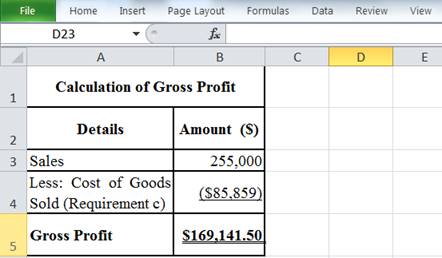
Table 13
Want to see more full solutions like this?
Chapter 6 Solutions
Financial Accounting
- Can you solve this general accounting problem with appropriate steps and explanations?arrow_forwardAccurate Answerarrow_forwardAt the beginning of the year, Momentum Corporation estimated its manufacturing overhead to be $425,000. At the end of the year, actual machine-hours were 34,500 hours, actual manufacturing overhead was $408,200, and manufacturing overhead was underapplied by $18,400. If the predetermined overhead rate is based on machine-hours, then the estimated machine-hours at the beginning of the year used in the predetermined overhead rate must have been: (Round your intermediate calculations to 2 decimal places.)arrow_forward
- Please explain the solution to this general accounting problem using the correct accounting principles.arrow_forwardHow many board feet of wood does timber need to purchase in May?arrow_forwardI am trying to find the accurate solution to this general accounting problem with appropriate explanations.arrow_forward

 AccountingAccountingISBN:9781337272094Author:WARREN, Carl S., Reeve, James M., Duchac, Jonathan E.Publisher:Cengage Learning,
AccountingAccountingISBN:9781337272094Author:WARREN, Carl S., Reeve, James M., Duchac, Jonathan E.Publisher:Cengage Learning, Accounting Information SystemsAccountingISBN:9781337619202Author:Hall, James A.Publisher:Cengage Learning,
Accounting Information SystemsAccountingISBN:9781337619202Author:Hall, James A.Publisher:Cengage Learning, Horngren's Cost Accounting: A Managerial Emphasis...AccountingISBN:9780134475585Author:Srikant M. Datar, Madhav V. RajanPublisher:PEARSON
Horngren's Cost Accounting: A Managerial Emphasis...AccountingISBN:9780134475585Author:Srikant M. Datar, Madhav V. RajanPublisher:PEARSON Intermediate AccountingAccountingISBN:9781259722660Author:J. David Spiceland, Mark W. Nelson, Wayne M ThomasPublisher:McGraw-Hill Education
Intermediate AccountingAccountingISBN:9781259722660Author:J. David Spiceland, Mark W. Nelson, Wayne M ThomasPublisher:McGraw-Hill Education Financial and Managerial AccountingAccountingISBN:9781259726705Author:John J Wild, Ken W. Shaw, Barbara Chiappetta Fundamental Accounting PrinciplesPublisher:McGraw-Hill Education
Financial and Managerial AccountingAccountingISBN:9781259726705Author:John J Wild, Ken W. Shaw, Barbara Chiappetta Fundamental Accounting PrinciplesPublisher:McGraw-Hill Education





